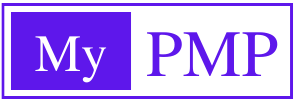Product Owner
In the Agile development method, a product owner is the person in charge of defining and ranking the features and requirements of a product or service. The product owner acts as the link between the development team and the stakeholders to make sure that the product or service meets the needs of the business and the end users.
The most important jobs of a product owner are:
Defining the Product Vision: It is up to the product owner to set the overall vision and goals for the product or service. This includes figuring out who the target audience is, what the business goals are, and what the key features and requirements are.
Putting features in order of importance: The product owner must put the product’s or service’s features and requirements in order of importance based on business value, customer needs, and technical feasibility.
Managing the Product Backlog: The product owner makes sure that the development team is always working on the most valuable and important features and requirements by keeping a prioritised list of them.
Communicating with Stakeholders: The product owner is the link between the development team and the stakeholders. He or she gives regular updates on the project’s status and makes sure that the stakeholders’ needs are being met.
Accepting Deliverables: It is up to the product owner to decide whether or not the deliverables made by the development team meet the requirements and specifications listed in the product backlog.
Making Trade-Offs: The product owner is responsible for making trade-offs between competing priorities, like balancing the need for new features with the need for stability and quality.
The product owner is a critical role within the Agile development methodology, helping to ensure that the development team is focused on delivering value to the business and the end-users. The product owner is in charge of making sure that the product or service meets the needs of the stakeholders while also taking into account the technical limitations and development team’s priorities.
Usage
It is used in agile project management








